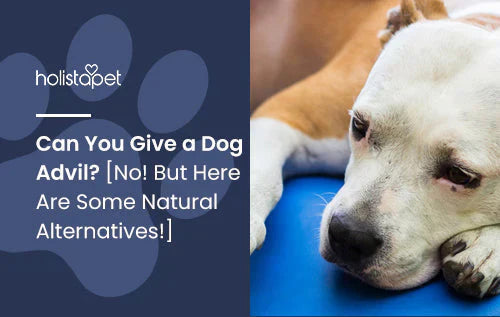Some dogs leave their mark wherever they go. If you find clumps of your pet's hair all over your clothes and furniture, you may be wondering how to stop a dog from shedding. This guide will answer all of your questions about canine shedding. To keep your dog healthy and your home clean, let's first take a look at why dogs shed.
Why Do Dogs Shed & Is It Normal?
Shedding is a normal part of your dog's hair growth. Many canine breeds prepare themselves for colder months by growing out their hair to insulate their bodies. When the warm weather comes back around, dogs no longer need all that excess hair, so they shed it off.

How Much Is Normal Shedding?
Dogs shed various amounts of hair based on their breed (or mix of breeds, for all the mutts out there). You must first determine what normal shedding looks like for your dog before deciding whether it is excessive or not. Since many dogs need more fur to keep themselves warm in cold months, we don't want to stop their shedding entirely.
As for when do dogs shed the most, seasonal shedding is common, though some dog breeds get rid of loose hair year-round. For example, Golden Retrievers shed a TON, so their normal level of shedding would be excessive for a breed that doesn't shed at all, like a Poodle. However, various health conditions can cause an abnormal level of shedding.
Once you determine the appropriate level of hair loss for your breed, it is easier to spot excessive shedding. Even if your pet constantly sheds its coat, there are steps you can take to cut down on the amount of dead hair in your home.
Breed Relevance for Canine Shedding
Some fluffballs can't help sporting a hairy coat. These dogs regularly shed a high volume of hair:
- German Shepherd
- Akita
- Bernese Mountain Dog
- Boston Terrier
- Chow Chow
- Alaskan Malamute
- American Eskimo Dog
- Rottweiler
- Labrador Retriever
- St. Bernard
- Keeshond
- Lakeland Terrier
- Pug
- Shiba Inu
- Newfoundland

Some dogs shed only a small amount of hair, and they are some of the best pooches for those with allergies. Some low-shedding breeds are:
- Basenji
- Chihuahua
- Maltese
- Dachshund
- Bichon Frisé
- Boxer
- Bullmastiff
- Doberman Pinscher
- Greyhound
- Komondor
- Poodle
- Portuguese Water Dog
- Rhodesian Ridgeback
- Saluki
- Schnauzer

Why Does My Dog Shed So Much?
If your dog is shedding more than normal, it could be due to stress, poor nutrition, or underlying medical issues. Dead hair or unhealthy skin can also be the result of improper grooming. Some common causes of excessive shedding in dogs include:
- Sunburns
- Fleas or lice
- Reactions to medicine
- Skin infections
- Pregnancy
- Hormonal imbalances
- Malnutrition
- Cancer
When too much shedding occurs, keep an eye out for other signs of medical problems. If you notice any bumps, lesions, or wounds on your canine that refuse to heal, contact your veterinarian immediately.
Related Article: Dog Hair Loss Home Remedies [The Complete Guide]
How to Deshed a Dog
If your home is a flurry of dog fur, we have some techniques that can help you cut down on your pet's shedding. All dogs are unique, so try out a few methods to find the best one. Keep in mind that some breeds shed year-round, and the goal for these dogs is to minimize hair loss rather than eliminate it entirely.
- Brush Daily: Regular brushing keeps dogs' coats free of loose and dead hair. This is especially important for dogs with long hair because fur can easily become trapped in their coats. Remove this excess hair to help your dog prepare for warmer weather.
- Use the Right Brush: There are plenty of brushes that are designed with all dog breeds in mind. For breeds with long coats, you'll want a brush that can penetrate their thick hair. A slicker brush has hard wire bristles that can remove tangles and knots during periods of light shedding. Short-haired dogs should use a natural-bristle brush or a grooming mitt.
- Wash Regularly: Baths are one of the most crucial parts of a healthy grooming routine. The frequency with which you bathe your pet depends on its breed, though you should aim for every 4-8 weeks as a general guideline. Going more than 8 weeks without washing your dog can deteriorate their coat and skin health. For a full breakdown of each dog group's bathing needs, check out this helpful guide by Petco.
- Dog Shampoo For Shedding: Just like we use shampoo in our own hair, dogs benefit from hair-care products designed for canines. Your dog's wellbeing — including its fur and skin — may benefit from the use of CBD. Your dog's endocannabinoid system (ECS) regulates many of your canine's body functions, including those that affect its skin and coat. When you use a nourishing CBD shampoo for dogs, it complements their ECS.
- Dog Food for Shedding: Healthy nutrition also plays a large role in your dog's shedding patterns. If you're looking to improve their skin or coat health, you may want to switch up their diet. A balanced diet reinforces a dog's hair follicles.
- Use A Fatty Acid Supplement: Omega-3 fatty acids are some of the best ingredients for healthy hair. These fatty acids can be found in the oil of flaxseed, fish, canola, walnuts, and soybeans. Another excellent source of these nutrients is hempseed oil, which can be found in our CBD for dogs.
- Keep Them Hydrated: Dehydrated skin is a major cause of hair loss. When spring and summer months roll around, ensure that your pet has constant access to fresh, clean water. However, make sure your pet is not drinking excessive amounts of water. While there is such a thing as drinking too much water (known as water intoxication), this is a rare disease.
- Walk & Exercise Your Dog Normally: Exercise is one of the best ways to reduce the risk of your pooch getting sick. While there is no guaranteed method for protecting canines from illness, regular walks or trips to the dog park are vital for a long and healthy life. Routine exercise for your dog reduces stress (another cause of hair loss) and boosts follicle strength.
- Manage Their Stress: Anxiety and stress play a significant role in your pup's health. If your dog is always on edge, its quality of life will suffer in several ways. Stress can cause your pet to overgroom or skip meals, and this takes a toll on their skin and coat health. If your dog can't seem to calm down, try providing them with exercise, affection, or CBD. Cannabidiol can calm skittish dogs and provide them with relief from phobias and other stressors.
- Use Allergy & Flea Control: Allergies are one of the most common reasons for irritated skin. Canine allergies are relatively common in all breeds, and fleas can afflict any dog. If your pet is leaving clumps of hair all over your furniture, fleas or an allergic reaction may be the cause. Administering an allergy or flea medication is a great way to help your pet's discomfort. Consult a vet before choosing the medication to ensure your dog gets proper care.
Related Post: Simple Home Remedies for Dog Shiny Coat
When To Go To The Vet

Excessive hair loss doesn't always require a trip to the veterinarian, but vigilance is key. While you may already be aware of your dog's allergies, new conditions could cause the pet to lose control of its hair follicles. Shedding should not result in bald patches, redness, or irritated skin. If a foul odor comes from your dog's skin when they shed, it is an indication that something is wrong. Take your pet to the veterinarian to find a solution.
Related Product: CBD Oil Specifically Made For Dogs!
Final Thoughts
These methods should help you reduce shedding and keep the "fur" out of your furniture. Even if your pet sheds year-round, you can still keep a clean home with routine grooming, adequate exercise, and a balanced diet. For all of the latest pet care information and helpful grooming techniques, HolistaPet has you covered!
Read Next: Dog Dandruff: Common Causes & Tips for Prevention







![Probiotics For Dogs [Soft Chews] - HolistaPet](http://www.holistapet.com/cdn/shop/files/Probiotic-Infographic-1_472d7a29-e30c-435a-9638-1365d8c3a9f9.jpg?v=1725384841&width=104)



























Leave a comment
All comments are moderated before being published.
This site is protected by hCaptcha and the hCaptcha Privacy Policy and Terms of Service apply.